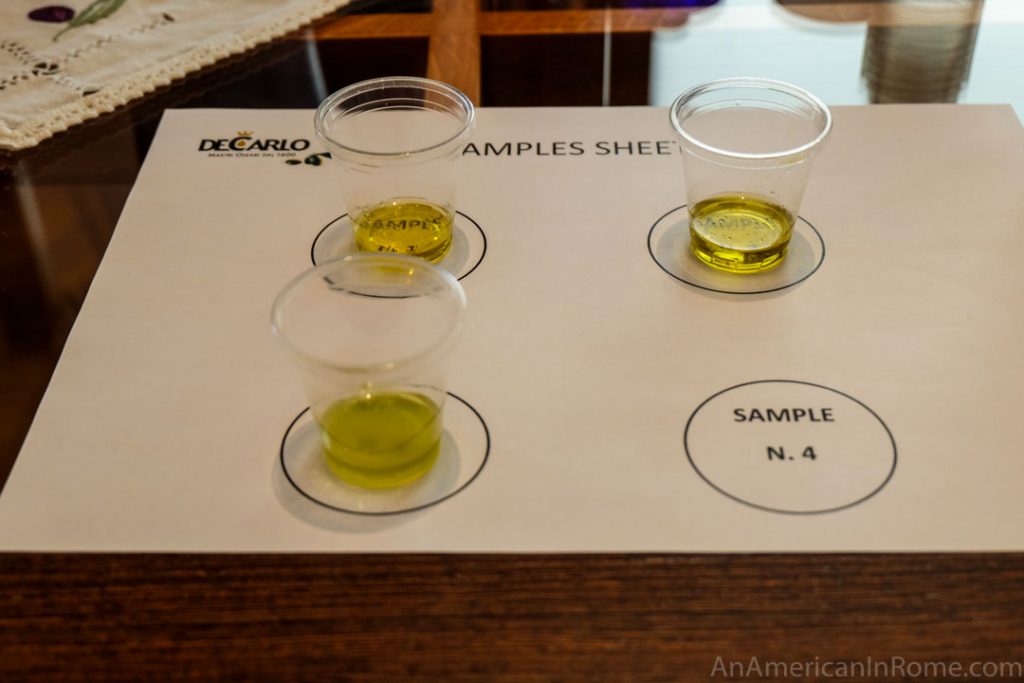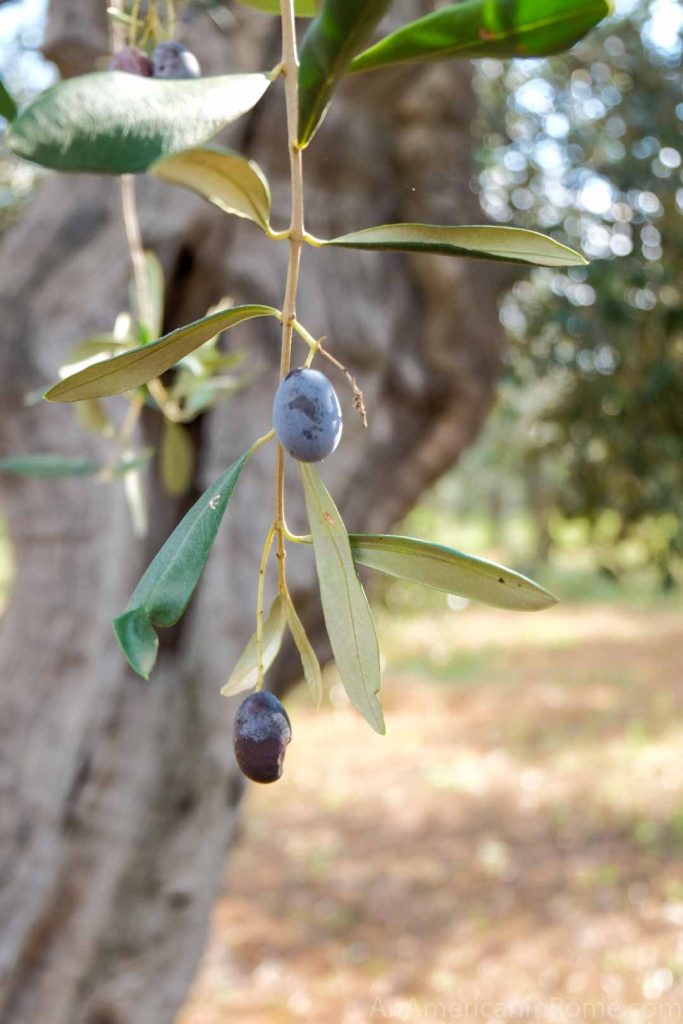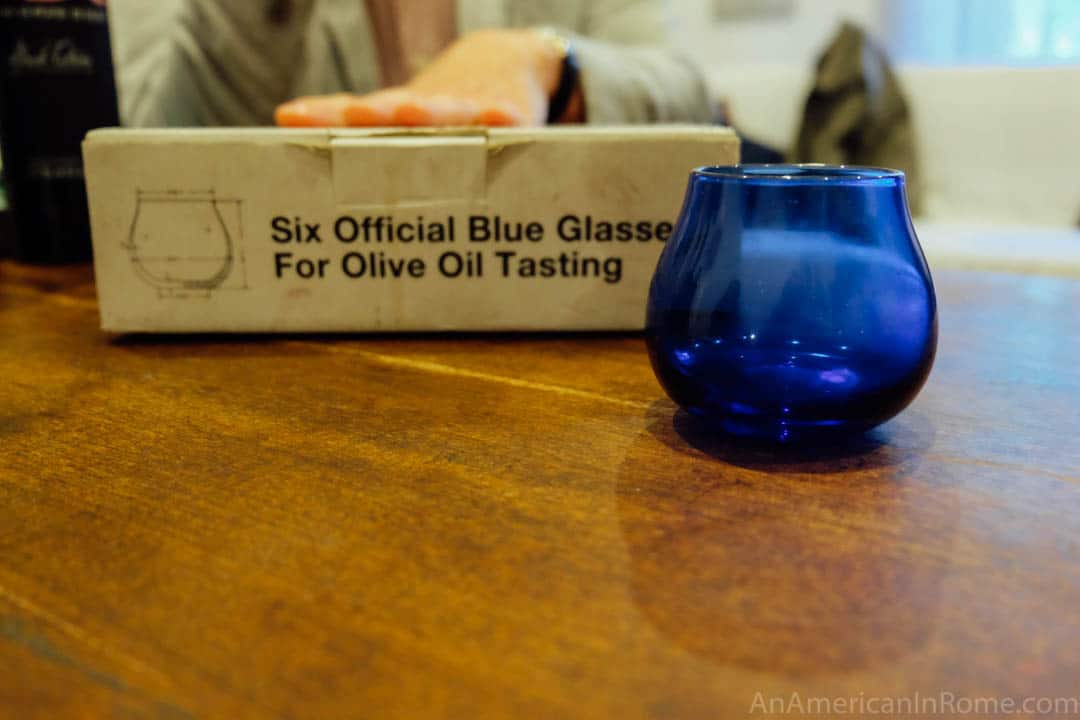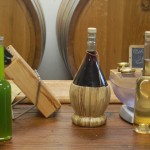It is impossible to imagine Italian food without extra virgin olive oil. While there are some exceptions with different regional cuisines, on the whole, Italy uses a lot of olive oil. The healthy fat is used in cooking, as well as dressing foods, and contains an impressive amount of food-for-you antioxidants.
Good extra virgin olive oil is also simply delicious. Real olive oil has complex flavors, which is what makes it an essential part of so many Italian dishes. If you think olive oil is too greasy, then you have probably been trying rancid oil all this time.
To really appreciate olive oil, you need to focus and taste it. Tastes are personal, so this is also the best way to find the olive that works best for you and the foods which you like to eat.
Here is a complete guide to how to taste olive oil like a professional (because olive oil taster is a real job in Italy!), tips on how to buy the best extra virgin olive oil, and signs that your oil has gone bad – or was never good to begin with.
Buon appetito!

How to Taste Olive Oil
Much in the same way you would taste wine, there is a specific way to taste olive oil if you really want experience all of its flavors, aromas and unique qualities. Professional tasters use specific gear, but you can recreate these kinds of tastings in your own home to give yourself the chance to really focus on the olive oil.
- Pour a small amount of oil into a stout glass. Place the glass in your cupped palm and cover the top of the glass with your other hand. This will help to warm the oil slightly and bring out its true characteristics.

Professional olive oil tasting glasses belonging to Johnny Madge - Once you have held the glass to warm it, bring your top hand away to uncover the glass. Bring your nose to the rim and take 3 deep breaths, inhaling the aroma of the olive oil. You might notice a bright, grassy smell and a fruity aroma – olives are fruit, after all!
- Now it is finally time to taste the olive oil. Start with only a very small sip, just enough to coat the inside of your mouth. You don’t want too much because the next step is to inhale through your partially opened lips while keeping the oil inside your mouth. The breath should be sharp and almost slurpy sounding. If you end up coughing – good! It is a great sign if l’olio pizzica in gola, the oil “hits” you in the back of the throat.
- The spicy (peppery) and sometimes pleasingly bitter qualities of real Extra Virgin Olive Oil is a sign of phenolic components and antioxidants. Allow the flavors to wash over you – is there any artichoke? Hints of other veggies and greenery? Congratulations – you have a great olive oil on your hands.

How to Buy the Best Extra Virgin Olive Oil
There is a lot of olive oil sold as extra virgin when it is actually rancid. Enforcing the definition of “extra virgin” is difficult given the volume of olive oil that is marketed all over the world. That being said, there are certain things that you can look out for if you want to be sure that you are buying the absolute best extra virgin olive oil:
- Buy from small producers. The best way to ensure that you are getting really truly the best extra virgin olive oil is to buy it directly from a producer. I get my new olive oil (olio nuovo) at the Circo Massimo farmers market in Rome. I also tend to buy Extra Virgin Olive Oil whenever I am traveling around Italy because each region tends to have an oil with slightly different characteristics. That is how I ended up with a few bottles of De Carlo Olive Oil from Puglia.
- Expect to pay the true price for the really good stuff. If the price is too good to be true, the oil is probably bad. Even if you manage to buy direct, Extra Virgin Olive Oil will cost €12-€15 per liter, minimum.
- Check for the harvest date. Any good olive oil will always have the date of the harvest printed on the label. The best olive oil should be used within one year of the harvest, which is almost always in October or November. Make sure your bottle has the date it was made and the date it expires (which make even be handwritten) on the back.
- Look for a DOP label. DOP is usually translated as “PDO” in English and indicates protected designation of origin. It is a regulated labeling procedure and guarantees that the olive oil with this designation comes from a specific geographic location and was made using traditional methods.
- Examine the bottle. True extra virgin olive oil is always sold in dark glass bottles or tins, with the only exception I can think of being Frescobaldi Laudemio
, which is a Tuscan olive oil sold in a beautifully retro clear bottle that should always be stored in the accompanying box. If you see a clear glass bottle, turn the other way! Heat and light degrade olive oil so the best extra virgin oil is always protected in a darker container.
- Stay away from flavored oils. There is no need to infuse extra virgin olive oil with things like lemon or garlic because this will only cover up the real flavors of the oil. That means that oil with these types of aromatics added in was probably not good to begin with, and the flavors are there to cover up a flaw.
Signs Olive Oil Has Gone Bad
- Cloudiness in the oil is not actually a sign of bad oil, and neither is green color (though oil does tend to lose its color as it ages or if it is exposed to too much light or heat). This is why professional tasters always use a dark blue glass when tasting the olive oil for the first time – so that they won’t be distracted by the way the oil looks.
- The most common defect in oil is rancidity, which happens when the olive oil has been exposed to too much oxygen. Rancid olive oil tends to look yellow and greasy. It might have a nutty smell to it as well.
- Other smells that indicate your olive oil is bad: muddy odors, vinegar defects (caused by fermentation, musty smells (which might mean that the olive oils used to make it were moldy), metallic odors, and finally – very little taste or smell at all. This flatness also indicates the oil is rancid.

How to Learn More
Want to learn more about Extra Virgin Olive Oil? I really recommend the book Extra Virginity: The Sublime and Scandalous World of Olive Oil, which looks at the mindboggling amount of fraud in the industry.
If you are in Rome and want to do an olive oil tasting (or want to get out to see where some of best local oil comes from in the Sabina hills), be sure to contact Johnny Madge. I did a guided tasting with Johnny and learned so much about good olive oil. He’s a professional olive oil judge and can set something up for you privately, or sometimes hosts group tastings in the center of Rome.
If you want to design a pilgrimage of your own, you can also pick up the Gambero Rosso guide (in Italian) to Oli d’italia, which ranks the best olive oil in Italy.
And if you really really want to taste the best Extra Virgin Olive Oil, then go straight to the source and join an olive harvest.

Please note this post may include affiliate links to products I personally own and recommend.







For those of us back home in the USA, who are not about to suddenly acquire expert tasting skills for olive oil (we failed at wine tasting too but know what we like, usually sticking to Italians), there are a couple hints at reliable though perhaps not exquisite products that are good enough for daily use. Surprisingly the big box store Costco (the only one with a regular guy CEO and which pays its work force reasonably well, and actually seems to care about its customers), has 2 products from a list of 10 US available products I saw last year that can be trusted. It even included their store brand Kirkland which is cheaper (as well as tastier) than all the other bland supermarket brands. But they also sell Lucini EVOO Premium at about 45% of the price Whole Foods charges. This winter they even have a slightly more expensive Lucini Olio Nuovo. We have been relying on Lucini for our nightly salads for years now ever since I submitted a favorite zucchini pesto pasta recipe to the Del Verde website and they liked it enough to send us a box of pasta, tomato sauce and Lucini olive oil (surprise). Apparently they have some kind of partnership. As for Kirkland, just to get an independent take on the situation, I found this article from California:
https://www.laweekly.com/restaurants/best-bargain-extra-virgin-olive-oil-costco-kirkland-organic-2378295
We stick with Lucini.